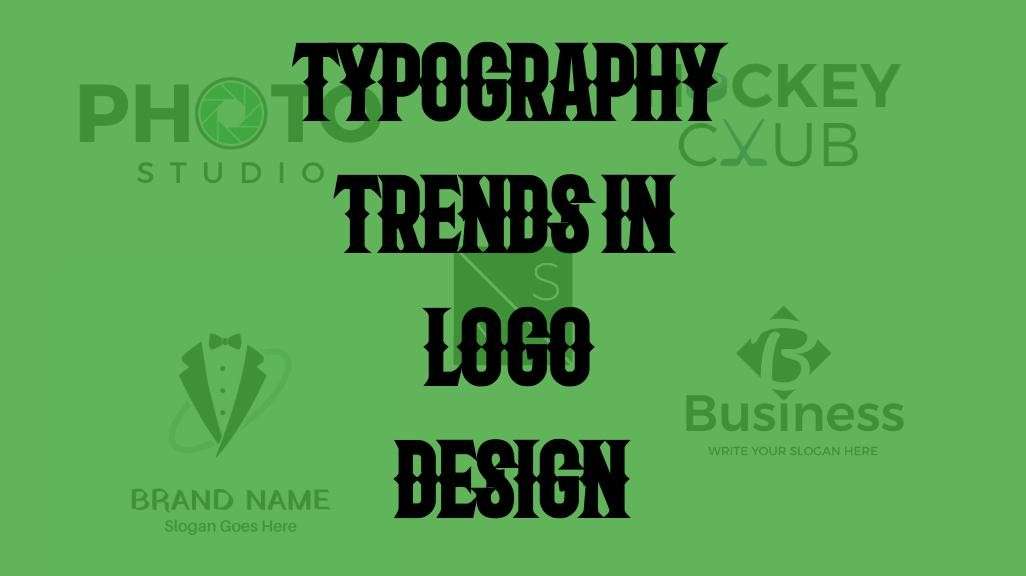In the fast-paced realm of design, the significance of Logo Design as a pivotal component of brand identity cannot be overstated. It serves as the emblematic face of a company, a visual language communicating its values, personality, and essence to a diverse audience. Within this intricate world, the role of typography in logo design has undergone a remarkable transformation, with designers exploring and embracing new trends to create visually captivating and memorable logos that resonate with consumers.
1. Minimalistic Typography: The Power of Simplicity
Minimalism has transcended from a design choice to a philosophy, and this holds true in logo design as well. The trend towards minimalistic typography focuses on the mantra that less is more. Clean, sleek lines and straightforward fonts contribute to a modern and timeless aesthetic. This design philosophy is particularly effective for brands aiming to convey a sense of sophistication and professionalism, cutting through the clutter with clarity. Utilizing a logo maker app can simplify the process of achieving this sleek and minimalistic look.
2. Hand-Lettered Fonts: A Personal Touch to Branding
In the era of mass production and digital uniformity, hand-lettered fonts inject a refreshing sense of personality and authenticity into logo designs. These fonts add a human touch, making the brand more relatable to the audience. Whether it’s a casual script exuding friendliness or an elegant cursive conveying refinement, hand-lettered fonts provide a unique and custom feel, establishing a brand’s individuality and setting it apart from competitors.
3. Bold and Playful Typography: Crafting a Bold Statement
For brands aiming to make a striking statement, bold and playful typography is a trend worth exploring. Vibrant colors, creative font choices, and unconventional layouts capture attention and reflect a brand’s dynamic and energetic personality. This trend is particularly popular among industries targeting a younger and trend-focused demographic, signaling a departure from traditional norms in favor of a more daring approach.
4. Geometric Fonts: Precision and Modernity in Design
Geometric fonts continue to dominate the logo design landscape, embodying precision and modernity. Their clean lines and precise shapes convey a sense of order, professionalism, and forward-thinking. These fonts are versatile, seamlessly fitting into various industries, from technology to finance, providing a visual representation of stability and trustworthiness.
5. Responsive Typography: Adapting Across Digital Platforms
In an era where digital presence is paramount, responsive typography stands out as a crucial trend in logo design. Brands now require logos that look equally impressive on a website, social media, or a mobile app. Designers are focusing on creating logos with fonts that scale seamlessly across different platforms, ensuring a consistent and impactful brand image in the digital landscape.
6. Combining Typography with Iconography: For a Unified Brand Image
The integration of typography with iconography emerges as a powerful trend in logo design. By combining letters with symbols or icons, brands can create a unified and cohesive visual identity. This approach enhances brand recognition and allows for flexibility in adapting the logo for various applications, fostering a sense of consistency across diverse marketing channels.
7. Serif Fonts: Reviving Timeless Elegance
While sans-serif fonts have dominated recent trends, serif fonts are experiencing a revival. Their timeless elegance and classic appeal add a touch of sophistication to logo designs. Serif fonts are especially effective for brands looking to establish a sense of tradition, reliability, and a connection with the past.
8. Negative Space Typography: Unlocking Hidden Meanings
Playing with negative space in typography adds an element of intrigue to logo designs. Cleverly using empty spaces within letters or around them can convey hidden meanings or subtle imagery. This trend not only captures attention but also invites viewers to engage and interpret the logo on a deeper level, creating a memorable and thought-provoking brand experience.
9. Gradient Typography: Infusing Colorful Energy
Gradient typography is a trend that infuses a burst of color and energy into logo designs. By blending different hues within the letters, designers create eye-catching visuals that stand out. This trend is particularly effective for brands in creative and vibrant industries, adding a playful and modern touch to their logos, reflecting a forward-thinking and innovative approach.
10. Custom Fonts: A Unique Visual Identity
In a marketplace inundated with visual stimuli, standing out becomes imperative. Custom fonts offer brands the opportunity to create a logo that is entirely unique to their identity. Designers are increasingly developing custom typefaces that reflect the brand’s personality, values, and story, ensuring a one-of-a-kind visual representation that leaves a lasting imprint in the minds of consumers.
Conclusion
In conclusion, the landscape of logo design is dynamic and continually evolving, with typography playing a pivotal role in shaping a brand’s identity. Whether embracing minimalism, experimenting with hand-lettered fonts, or exploring the fusion of typography with iconography, designers are pushing boundaries to create logos that not only align with current design aesthetics but also stand the test of time.

As the editor of the blog, She curate insightful content that sparks curiosity and fosters learning. With a passion for storytelling and a keen eye for detail, she strive to bring diverse perspectives and engaging narratives to readers, ensuring every piece informs, inspires, and enriches.










